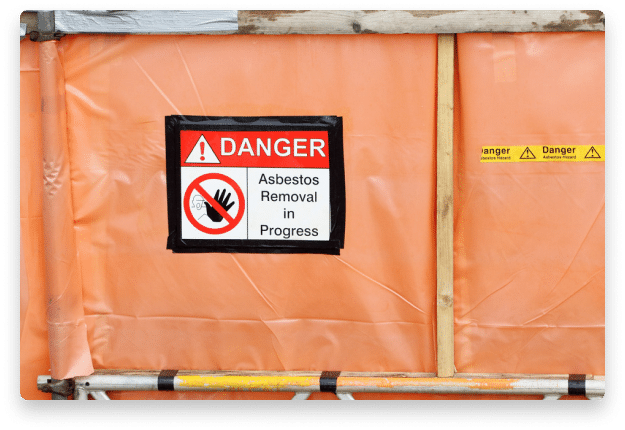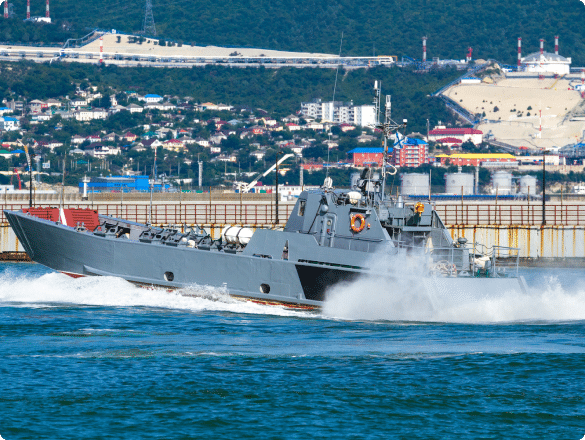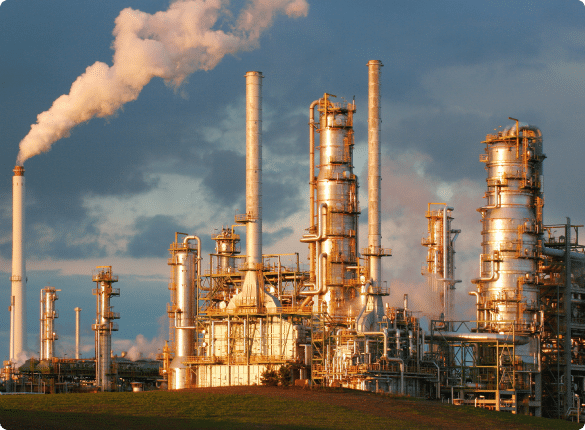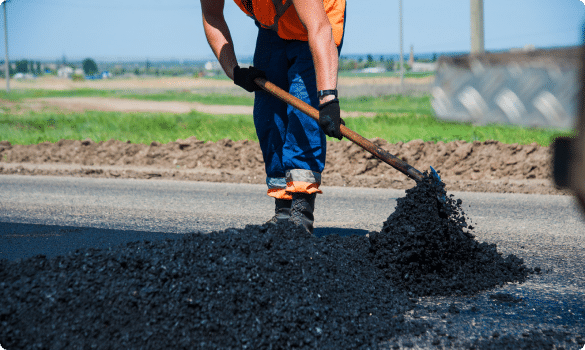20 Places in the Military with Asbestos Exposure and How Veterans Are at Risk
The brave men and women who selflessly put themselves in harm’s way while serving in our nation’s military were unaware that a hidden enemy lurked in nearly every setting, whether in battle, transport, or even their sleeping quarters. That enemy was asbestos, and while it didn’t cause immediate death, it slowly and quietly led to deadly asbestosis, mesothelioma, and asbestos lung cancer. Decades later, its relentless attack continues, and the death toll from military asbestos exposure continues to climb.
Home » 20 Places in the Military with Asbestos Exposure and How Veterans Are At Risk

An estimated 40,000 veterans have died from asbestos exposure in the military, according to the Environmental Working Group, and those numbers are expected to grow as asbestos-related illnesses continue to develop over the course of 20, 30, 40, or more years after the initial exposure.
As many as 12,000 to 15,000 Americans die of asbestos-related illnesses yearly, including approximately 3,000 from mesothelioma alone. While veterans comprise just 8 percent of the U.S. population, they account for 30 percent of these deaths.

What Is
Asbestos Exposure?
Asbestos is a naturally-occurring group of silicate minerals with a fibrous structure. The fibers are virtually indestructible. It was highly valued in industry during most of the 1900s for the following properties:
- Insulating capabilities
- Fire resistance
- Anti-corrosive properties
- Non-conductivity
- Chemical inertia
- Light weight
- Tensile strength
- Flexibility
It could be woven into fabrics and added to a variety of products and building materials. It was dubbed a “miracle mineral” because it was useful in so many applications. Unfortunately, the microscopic fibers are very easily released into the environment, where they can be inhaled or ingested.
The indestructible qualities making asbestos useful are the same qualities that make it dangerous to human health. The human body cannot break down the fibers, and millions of them can remain in the tissues of the lungs, stomach, and other parts of the body, where they slowly cause inflammation and cell damage, leading to scarring and cancer.
Asbestos minerals occur in two families: serpentine and amphibole. The serpentine family consists of just one type of asbestos, known as chrysotile. This is the most commonly used type. The amphibole family consists of five different types, including amosite and crocidolite. Amphibole asbestos is considered the more dangerous type. Military personnel were exposed to both families of asbestos.
Sources of Asbestos Exposure in the Military
While the military largely discontinued the use of asbestos since the late 1970s, various locations on ships, vehicles, and living quarters still contain the material. In addition, many countries where military personnel serve still use asbestos. Avoiding significant asbestos exposure while serving in the military is virtually impossible. The top 20 sources of military asbestos exposure are discussed below.
1. Navy Ships
The most significant asbestos exposure in the military occurred on Navy ships. It was useful for fire safety, waterproofing, insulating, and helping machinery work smoothly. It was used liberally on ships in nearly every component of the following types of ships:
- Amphibious assault ships
- Destroyers
- Frigates
- Cruisers
- Tugboats
- Aircraft carriers
- Submarines
- Fuel oil barges
- Replenishment oilers
- Oceanographic research ships
In 1975, the U.S. Navy implemented a policy to remove and replace asbestos on ships. However, in 1979, the Comptroller General of the United States admitted that 30 to 50 percent of the asbestos materials would not be replaced, and some would only be replaced during repairs.
The personnel serving on Naval ships experienced the heaviest exposures in areas below deck, such as in the engine room, boiler room, and propulsion areas, but asbestos exposure occurred throughout the ship on the following components:
- Boiler insulation
- Gaskets in engine and machine parts
- Brake pads and linings
- Pipe insulation, especially on steam pipes
- Thermal insulation
- Wallboards
- Block insulation
- Pumps
- Valves
- Flanges
- Turbines
- Machinery casings
- Cement
- Lagging
- Hull insulation
- Vinyl asbestos tile for decking and flooring
Engine rooms and propulsion areas were typically small rooms with low ventilation, making asbestos concentrations especially high. Unlike other work environments where asbestos exposure occurs during an eight-hour workday, Navy sailors were exposed 24/7 without a break.
Of course, members of the Marines were also exposed to asbestos since they served aboard Navy ships.
2. Naval Shipyards
While asbestos was still in use, Naval shipbuilders handled the material directly when manufacturing and installing the insulation, plumbing, and machinery. However, exposure was not limited to shipbuilders. Shipyard workers responsible for repairs experienced significant exposure while repairing and replacing gaskets, plumbing fixtures, insulation, boilers, and other ship machinery.
Some repairs required the complete removal of existing asbestos-containing materials, resulting in significant exposures. With so many asbestos components on ships, asbestos was airborne throughout each shipyard. This would have impacted all workers—including office workers—who did not handle asbestos directly.
Although asbestos removal on Navy ships began in the 1970s, this process is still incomplete, according to Occupational Environmental Medicine. Naval shipyard personnel remain at risk at Naval shipyards at home and abroad. Active Naval shipyards include the following:
- Norfolk Naval Shipyard in Portsmouth, Virginia
- Pearl Harbor Naval Shipyard in Honolulu, Hawaii
- Portsmouth Naval Shipyard in Kittery, Maine
- Puget Sound Naval Shipyard in Bremerton, Washington
- Guam Naval Shipyard in Apra, Guam
- Guantanamo Naval Shipyard in Guantanamo, Cuba
3. Coast Guard Vessels
The United States Coast Guard has acknowledged the presence of asbestos on its cutters—the flagship vessels of the Coast Guard. While the Coast Guard characterizes the exposure as a small amount, it is well-established that there is no safe level of asbestos, and even a small, one-time exposure can lead to disease.
The constant vibration of sea travel and the saltwater surroundings generally cause asbestos-containing materials to wear down and corrode at an accelerated rate, facilitating the release of asbestos fibers into the environment faster than when similar levels are present on land.
Additionally, during World War II, Coastguardsmen served aboard 350 Navy ships laced with asbestos throughout.

4. The World Trade Center After the 9/11 Terrorist Attacks

The Army National Guard was deployed to New York City for security and assistance in the cleanup efforts following the terrorist attack on September 1, 2011. Bloomberg News reported that the toxic plume of dust that resulted from the destruction of the World Trade Center contained 300 to 400 tons of asbestos.
According to Critical Reviews in Toxicology, this level is 10 to 1,000 times higher than in homes with damaged asbestos. This one-time exposure to asbestos is enough to put our guardsmen at risk of asbestos lung cancer and mesothelioma. A study published by the American Cancer Society in 2022 identified nine individuals who developed mesothelioma after exposure to the toxic dust cloud.
Mesothelioma is a latent illness that can occur 20 to 60 years after asbestos exposure. As a result, we are only beginning to see asbestos illnesses stemming from the 9/11 terrorist attacks.

5. Land Vehicles
Land vehicles such as jeeps and trucks, often used to navigate rugged terrain in foreign countries, contained asbestos in the following components:
- Brake linings
- Brake pads
- Clutches
- Engine gaskets
- Industrial adhesives
- Electrical wiring
Asbestos was especially useful in the parts of vehicles that were prone to friction and in wearable engine parts like gaskets. It was also important for insulating against heat and electricity. Wearable engine parts often required repair or replacement, which exposed military mechanics to high levels of asbestos.
6. Aircraft
Asbestos was valuable in aircraft because it provided superior heat and fire protection while also being lightweight. As a result, asbestos was heavily used in airplanes, jets, and helicopters. The asbestos was generally encapsulated while aircraft were in use, but aircraft mechanics faced high exposure levels while manufacturing, repairing, or replacing the following components:
- Heat shields
- Tires
- Electrical wiring
- Insulation
- Brake pads
- Brake linings
- Clutch pads
- Engine gaskets
The hangars where aircraft were stored, maintained, and repaired were likely insulated with asbestos. In addition, asbestos dust released during aircraft maintenance would have spread throughout the hangars, exposing Air Force members and workers, whether or not they handled asbestos directly.
7. Heavy Machinery
The military uses heavy machinery for construction, demolition, and the movement of artillery and other materials. Like land vehicles, heavy machinery contains many components that generate heat and friction, including brake pads, brake linings, and clutches. Engine gaskets, lubricants, and electrical wiring may also contain asbestos.
Heavy equipment operators may face asbestos exposure through the movement of asbestos-containing materials during construction, demolition, and the clearing of debris following building destruction. Even while occupying the vehicle, a worker may be exposed as asbestos dust enters the equipment operator’s breathing space.
Mechanics building, maintaining, and repairing these vehicles also experience heavy asbestos exposure while working on brakes, clutches, engine gaskets, tires, electrical components, and insulation.
8. Tanks
Tanks require extensive maintenance and heat protection. They have historically been prone to severe vibration during use, increasing maintenance needs and making it easier for asbestos-containing components to become worn or damaged, resulting in the release of asbestos.
Asbestos-containing components in tanks are similar to those in heavy equipment. However, asbestos may also be found in artillery storage areas and personal protective equipment worn by tank operators.
9. Oil Reserves, Pipelines, and Refineries
The United States military took an interest in foreign oil as far back as 1945, during President Franklin D. Roosevelt’s administration. Since that time, American military troops have guarded foreign oil in the Caspian Sea Basin and Africa.
Oil is highly flammable, and asbestos can reduce fire risks. Many countries in this part of the world do not restrict asbestos. Military personnel working in or guarding oil refineries, reserves, and pipelines in these countries may encounter significant asbestos in the following equipment:
- Oil storage tanks
- Pipes
- Cables
- Buildings
- Industrial machinery gaskets
- Industrial adhesives
- Electrical wiring
- Valves
- Flanges
The first Gulf War started after Saddam Hussein burned Kuwaiti oil fields. Deployed troops were exposed to the resulting smoke that covered a wide swath throughout the Middle East. It contained multiple toxins, including asbestos. According to NASA, these fires burned for ten months.

10. Communication Centers
Wiring insulation prevents wires from touching and igniting. This includes wires used in telecommunications. From the 1930s until the late 1970s, asbestos was a key ingredient in wiring insulation. According to the Communications Workers of America labor union, asbestos was used in the following telecommunication products:
- Spray-on and wrapped insulation
- Wallboard
- Vault covers
- Construction shingles
- Cable ducts

11. Construction Materials
Military members are often involved in rebuilding operations in foreign countries. It is also sometimes necessary to construct temporary shelters. It is also not unusual for the military to be involved in constructing roads, dams, bridges, and tunnels.
Construction workers in the military face high-level exposure, even to this day. Some countries do not regulate asbestos, and asbestos has historically been used liberally in the following construction materials:
- Building insulation
- Cement
- Pipe insulation
- Steel beams
- Asbestos floor tiles
- Wood preservation products
- Industrial adhesives
- Joint compound
- Drywall
- Roofing materials
Asbestos insulation was often applied using a spray-on application. While most asbestos is encased in hard materials that prevent it from becoming airborne unless damaged, sprayed asbestos is easily damaged. This is known as friable asbestos. Friable asbestos was used on steel beams and as insulation around some pipes.
Military personnel are often exposed during demolition or when buildings become damaged by fire or natural disasters. These buildings can release significant levels of asbestos into the environment, resulting in heavy exposure for workers in the building and bystanders.
12. Government and Administrative Buildings
Administrative buildings built before 1980 generally contain asbestos in roofing materials, flooring, drywall, and insulation. The Pentagon was also built with asbestos.
Construction of the Pentagon began in September of 1941, while asbestos use in the United States was at its peak. Approximately 10,000 tons of asbestos were used in the construction of the Pentagon, and the material was used in every section. According to a 1994 CBS News report, no one knew the extent of the asbestos problem until after the building’s condition deteriorated and renovations could no longer be delayed.
Renovations were planned for each section separately. The section hit by the plane during the terrorist attack on September 1, 2011, had just been renovated, thus preventing the release of significant asbestos levels into the environment, according to the American Society of Civil Engineers.
13. Military Bases
In 1996, the U.S. House of Representatives acknowledged that approximately half of all military barracks were at least 30 years old, with an average age of more than 40. Furthermore, approximately 25 percent of these barracks were in substandard condition. Thus, servicemembers faced a significant risk of asbestos exposure. At the time, approximately 600,000 men and women lived in troop housing.
According to the military’s own disclosure document, military family housing built before 2000 and mechanical rooms before 2002 may contain asbestos. Asbestos on military bases was not limited to housing. It was also in schools, post offices, and public buildings.
The following components of military barracks and other buildings contained asbestos:
- Flooring
- Drywall
- Plaster
- Insulation
- Plumbing pipes and valves
- Ductwork
- Roofing materials
- Cement
- Joint compound
- Ceiling tiles
- Boilers
- Electrical wiring
- Stove linings
Asbestos flooring in base housing and schools wears down over time, releasing asbestos fibers. As walls were drilled into, asbestos in the drywall also became airborne. Military members and their families may also have experienced asbestos exposure due to plumbing repairs, insulation upgrades, and renovations.
14. Fire Blankets
Fire blankets can quickly extinguish fires when other means, such as water, are unavailable. They are crucial in areas prone to fire or inaccessible to fire departments, such as ships, submarines, power plants, and oil refineries.
Asbestos was used heavily in fire blankets. According to Inhalation Toxicology, fire blankets used on Navy ships were 100 percent amosite asbestos.
15. Training Facilities
Asbestos contamination has been confirmed in the following recruit training barracks, according to documentation published by the Government Accountability Office:
- Army barracks in Fort Jackson, SC
- Army barracks in Fort Knox, KY
- Navy Barracks in Great Lakes, Ill
The United States Army also confirmed the presence of asbestos at the Jefferson Proving Ground in Indiana when it ceased operations there in 1995 and conveyed it to the United States Air Force.
Several other training barracks are in substandard condition and were built while asbestos was still in popular use, meaning asbestos is likely present.
16. Armories and Weapon Storage Areas
Asbestos has been found in multiple National Guard armories throughout the United States, including the following:
- Former National Guard Armory in Wahpeton, North Dakota
- The Kingston Armory in New York
- Former National Guard Armory in Chickasha, Oklahoma
- Alaska Army National Guard Kenai Armory
Bunkers and weapon storage areas also contain the material. The U.S. Environmental Protection Agency completed asbestos abatement at the former Kingsley Firing Range in Klamath Falls, Oregon, after finding asbestos in the Annex Guard Shack and two former firing range concrete ammunition bunkers.
Asbestos was found in the concrete asbestos board siding and the composite roofing material. Armories and weapon storage areas also contain asbestos in the following:
- Cement
- Flooring
- Building insulation
- Pipe insulation
17. Infrastructure in Foreign Countries
Asbestos is banned in Europe and heavily restricted in the United States but is still used without restriction in many countries in Africa and Asia. Asbestos is not banned in the following countries where U.S. troops are currently deployed:
- Cuba
- Syria
- United Arab Emirates
- Philippines
- South Korea
- Singapore
- Thailand
The countries where U.S. troops served during times of war, including Afghanistan, Vietnam, and Iraq, did not have asbestos restrictions when troops were present, although Iraq ultimately banned asbestos in 2016. Asbestos remains legal in Vietnam and Afghanistan.
As a result, personnel who served overseas in any capacity, including those currently deployed, may have been exposed to asbestos. Asbestos exposure may occur on foreign bases, while occupying buildings, during building construction, and during catastrophic events such as natural disasters, vehicle or building explosions, and fires.
Burn pits are commonly used by military personnel overseas. According to the American Cancer Society, burn pits were used to burn the following items, all of which commonly contained asbestos:
- Trash
- Plastics
- Wood
- Metal
- Paints
- Solvents
- Munitions
18. Protective Gear
Personal protective equipment designed to prevent toxic exposures turned out to be hazardous because it contained asbestos. This is especially true of equipment designed to protect against fires and extreme temperatures. Contaminated equipment includes the following:
- Helmets
- Boots
- Jackets
- Protective gloves used in the manufacture of weapons and ammunition
- Gas mask filters
According to Occupational & Environmental Medicine, gas mask filters contained 80 percent merino wool and 20 percent crocidolite asbestos beginning in 1940. Crocidolite asbestos is in the amphibole family and is considered the most hazardous of that type.
19. Missile Sites
Missile sites have been known to contain asbestos in the steel and concrete walls. According to the Missouri Department of Natural Resources, asbestos was confirmed at the Minuteman II Missile Sites in Missouri. Workers involved in constructing and maintaining missile sites may have been exposed.

20. Power Plants
The military uses multiple types of power plants, including electricity, nuclear power, hydroelectricity, gas, and steam. All forms of power are crucial to maintaining national security and operating ships, submarines, and military bases worldwide.
Unfortunately, asbestos played a key role in military power plants’ construction, maintenance, and operation. It was useful for preventing fires, insulating electrical wiring, and sealing pipes that carried liquids under high pressure. Asbestos may be found in the following areas in military power plants:
- Boilers
- Turbines
- Pipe insulation
- Electrical wiring
- Pumps
- Valves
- Gaskets
- Flanges
- Protective gear
Military Occupations That Were Most At Risk
The United States Department of Veterans Affairs acknowledges that U.S. veterans and active military members have faced significant asbestos exposure. It has determined asbestos exposure is “highly probable” for veterans who have worked in the following occupations:
- Aviation fire control technician
- Boilermaker
- Boiler technician
- Fire control man
- Fireman
- Pipefitter
- Fire control technician
- Gun Fire Control Technician
- Hull maintenance technician
- Instrument man
- Sonarman
- Soundman
- Sonar Technician
- Sonar Technician – Surface
- Sonar Technician -Submarine
- Utilitiesman
- Water tender

The VA considers asbestos exposure “probable” in the following occupations:
- Aviation Boatswain’s Mate
- Aviation Chief Metalsmith
- Aviation Machinist’s Mate
- Aviation Electrician’s Mate
- Aviation structural mechanic
- Aviation radioman
- Aviation support equipment technician
- Aviation electronic technician
- Aviation antisubmarine warfare operator
- Aviation antisub warfare technician
- Builder
- Construction driver
- Construction electrician
- Construction man
- Electrician’s mate
- Engineman
- Gas turbine system technician
- Interior communication technician
- Molder
- Machinist mate
- Missile technician
- Painter
- Steelworker
- Torpedo man’s mate
Military workers with the heaviest asbestos exposure generally worked below deck on Navy vessels, in shipyards, in construction trades, and in aircraft or vehicle maintenance. Firefighters, emergency medics, and veterans who were present for building explosions and demolitions also experienced heavy exposure.
The VA further acknowledges that veterans in trades not specifically listed were exposed to asbestos. It was almost impossible to avoid asbestos exposure during military service. If you are a veteran who developed an asbestos-related illness, you were likely repeatedly exposed to the material while serving.

